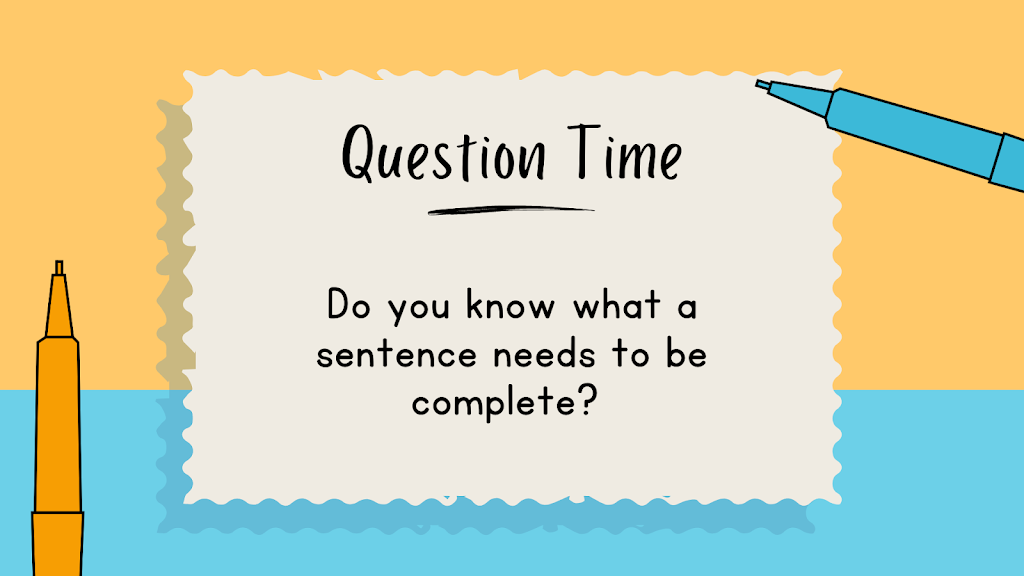
Understanding Sentences: The Building Blocks of Communication
Communication is the cornerstone of human interaction, and at the heart of communication lies the humble sentence. A sentence, in its simplest form, is a complete thought expressed in words. Whether spoken or written, sentences are the fundamental building blocks that convey meaning, allowing us to share ideas, stories, and information. In this blog post, we’ll delve into the intricacies of sentences – exploring their parts, rules, various types, and how to construct them effectively.
Parts of a Sentence
A. Subject
The subject of a sentence is the key player – the who or what the sentence is about. It can be singular or plural, and understanding its role is crucial for constructing clear sentences.
Example: “The cat” (singular subject) sleeps on the windowsill.
B. Verb
The verb is the action or state of being in a sentence. It brings life to the subject’s actions, and its tense can convey the timing of those actions.
Example: The cat sleeps (singular verb) on the windowsill.
C. Object
Objects, both direct and indirect, receive the action of the verb. They add depth to the sentence and enhance its meaning.
Example: The cat sleeps on the windowsill (direct object).
Rules for Constructing Sentences
A. Subject-Verb Agreement
Ensuring that the subject and the verb agree in number is a foundational rule. This agreement maintains harmony in the sentence and avoids confusion.
Example: The dogs (plural subject) bark (plural verb) loudly.
B. Punctuation
Proper punctuation is the roadmap that guides readers through the sentence. From periods to commas, each mark serves a distinct purpose.
Example: It is a beautiful day**.** Did you finish your homework**?**
C. Capitalization
Capitalizing the first word of a sentence and proper nouns is a small yet crucial detail that enhances readability and grammatical correctness.
Example: The United States is a large country.
Types of Sentences
A. Simple Sentences
Simple sentences are the foundation of communication, conveying a single complete thought.
Example: She walks in the park.
B. Compound Sentences
Combining ideas using conjunctions, compound sentences add complexity and variety to communication.
Example: She walks in the park, and he runs on the trail.
C. Complex Sentences
Complex sentences include independent and dependent clauses, offering a nuanced way to express ideas.
Example: Although it rained, they continued their picnic.
D. Compound-Complex Sentences
For intricate ideas, compound-complex sentences combine the features of both compound and complex structures.
Example: While it rained, they continued their picnic, but they eventually sought shelter.
Sentence Fragments and Run-Ons
A. Identifying Sentence Fragments
Incomplete thoughts lead to sentence fragments, disrupting the flow and clarity of communication.
Example: After dinner, walking by the river. (fragment)
B. Avoiding Run-On Sentences
Run-on sentences, lacking proper punctuation, can confuse readers. Correcting them ensures smoother communication.
Example: She likes to read, she also enjoys watching movies.
Common Errors to Avoid
A. Misplaced and Dangling Modifiers
Modifiers, when not correctly placed, can lead to confusion in sentence structure.
Example: Rushing to catch the train, the keys were forgotten. (dangling modifier)
B. Ambiguous Pronoun References
Unclear pronoun references can create confusion about the noun they represent.
Example: Mary said it would be here soon. (ambiguous)
VIII. Types of Sentences
A. Imperative Sentences
Imperative sentences give commands or make requests, and they often begin with the base form of the verb.
Example: Clean your room before guests arrive.
B. Interrogative Sentences
Interrogative sentences pose questions and end with a question mark.
Example: Have you finished your homework?
C. Exclamatory Sentences
Exclamatory sentences express strong emotion or surprise and end with an exclamation point.
Example: What a beautiful sunset**!**
D. Declarative Sentences
Declarative sentences make statements or express opinions and end with a period.
Example: The flowers in the garden are blooming
Conclusion
In conclusion, sentences are the bedrock of effective communication. Mastering their construction involves understanding the parts – the subject, verb, and object – and adhering to essential rules like subject-verb agreement, punctuation, and capitalization. Moreover, recognizing different sentence types and avoiding common errors ensures clarity and coherence in your communication. So, the next time you craft a sentence, remember that you’re not just stringing words together; you’re weaving the fabric of meaningful interaction. Happy writing!
